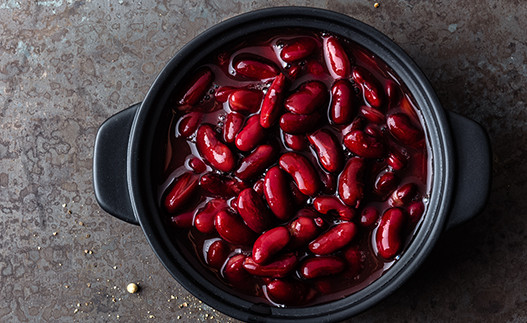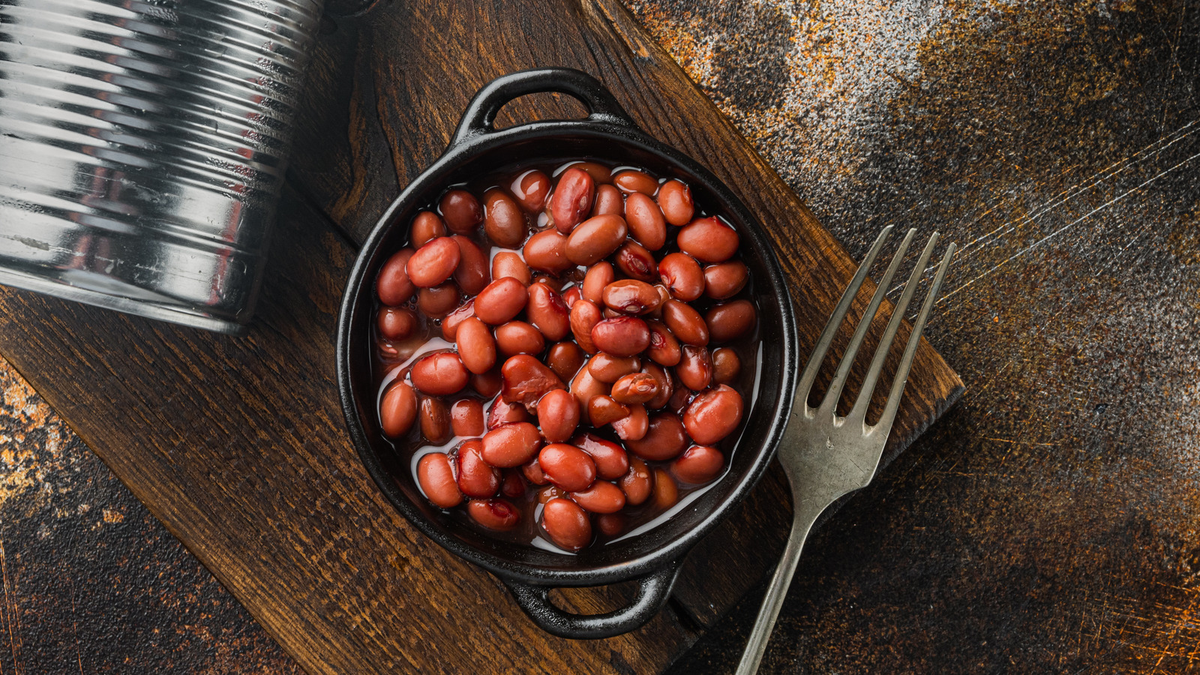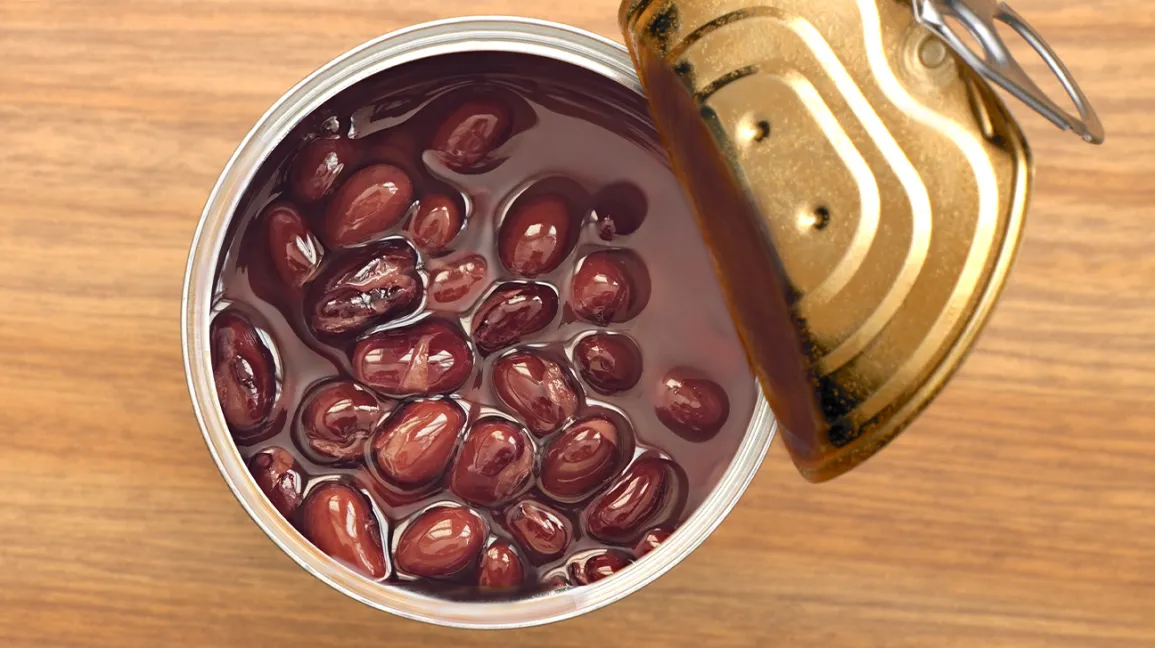Can you eat black beans right out of the can?
Black beans are a great source of protein, fiber, and other important nutrients. But when it comes to cooking with them, many people wonder if they can eat them right out of the can.

Black beans are a staple in many households, especially for those who follow a plant-based diet. They are easy to prepare and can be added to salads, soups, and bowls for a quick and healthy meal. However, not everyone knows whether it’s safe to eat them straight from the can or if they need to be cooked.
There are arguments on both sides of the debate about whether you can eat black beans right out of the can. On one hand, they’re already cooked, so technically you could eat them cold. But on the other hand, there are some good reasons why you may want to cook your black beans before eating them. In this article, we will explore the pros and cons of both options and help you make an informed decision about whether to cook or not to cook your black beans.
Can You Eat Black Beans Right Out of the Can?
Black beans are a common pantry staple, praised for their versatility and nutritional content. Many people wonder if it’s safe and appropriate to eat black beans straight out of the can, without undergoing a cooking process. In this article, we’ll explore the canning process of beans, potential risks and benefits of eating canned black beans, and how to enjoy this ingredient in various recipes.
Review of the Canned Bean Process
When it comes to consuming beans, canned beans offer a convenient and timesaving solution for many home cooks. Canned beans are a result of the canning process, which involves preparing and cooking the beans before they are canned and shipped to supermarkets.
The canning process begins by soaking the dried beans in water for several hours, which allows the beans to soften and begin to rehydrate. The beans are then boiled for a specific amount of time until they reach an appropriate texture. Afterward, the beans are placed in cans along with a liquid medium to help preserve the beans and maintain their flavor and texture.
One of the main benefits of using canned beans over dried beans is the convenience. Canned beans are already cooked and ready to eat, which means there is no need for overnight soaking or time-consuming cooking methods. Additionally, canned beans typically have a longer shelf life than dried beans, making them an ideal pantry staple for those who may not use beans regularly.
However, there are some potential drawbacks to using canned beans that home cooks should keep in mind. Canned beans may contain excess salt or sodium, which can be harmful to those with high blood pressure or those attempting to limit their daily intake of sodium. Additionally, canned beans may have a slightly different texture or flavor compared to beans prepared from scratch.
Various types of canned beans, including black beans, kidney beans, and pinto beans, are available in many grocery stores. Each of these beans has its unique flavor and texture, making it a versatile ingredient for many recipes.
In conclusion, the canning process is an excellent solution for those looking for a convenient and efficient way to incorporate beans into their diet. While it has its benefits, it is essential to be aware of potential drawbacks and accurately read labels to ensure that canned beans do not contain excess sodium or other harmful additives.
Is Eating Canned Beans Healthier Than Making Beans From Scratch?
Beans are a great source of plant-based protein, and both canned beans and beans made from scratch are popular options for many households. While canned beans offer the convenience of being pre-cooked and ready to use, making beans from scratch provides more control over the ingredients used and the potential health benefits.
Canned beans are cooked during the canning process and require no additional preparation before use. While this can be convenient, it’s important to note that canned beans may contain excess sodium and other additives. These additives can be harmful if consumed in large quantities, and those with high blood pressure should be especially cautious. Additionally, the canning process can affect the texture and flavor of the beans.

On the other hand, making beans from scratch involves soaking dried beans and cooking them in a pot or pressure cooker. Soaking the beans overnight can help reduce the cooking time and improve their digestibility. Once the beans are soaked, they can be cooked over medium-high heat until they are tender. This process can take anywhere from 30 minutes to a few hours, depending on the type of bean.
One of the main advantages of making beans from scratch is the ability to control the ingredients in the beans. This means that you can limit additives and sodium to a healthy level. Additionally, making beans from scratch can be a more cost-effective option for those who regularly consume beans.
While there are potential health benefits to making beans from scratch, it’s important to note that this process does require more time and planning than using canned beans. It also requires a bit of foresight, as the beans need to be soaked overnight before cooking. However, the additional time and effort can lead to a healthier and more flavorful final product.
In conclusion, while both canned beans and beans made from scratch have their advantages, making beans from scratch is a healthier option. This process provides greater control over the ingredients in the beans and their sodium levels. While canned beans can be convenient, relying solely on them can lead to excess sodium intake and potential negative health effects.
Recipe for Making Black Beans from Scratch
Black beans are a versatile ingredient that can be used in a variety of dishes, such as black bean soup, bean salads, and tacos. Making black beans from scratch can be a healthier and more cost-effective option than using canned beans. While it can take some time and planning, the end result is a delicious and nutritious meal that is worth the effort. Here’s a recipe for making black beans from scratch that you can try at home.
Ingredients Needed to Make Black Beans from Scratch
To make delicious black beans from scratch, a variety of aromatic ingredients, spices, and main ingredients are required. Here’s a list of key ingredients you’ll need:
– Dried Black Beans: About 1 pound (or 2 1/2 cups) of dried black beans are typically enough for a recipe that can feed about six people.
– Garlic: Use about 3-4 cloves of fresh garlic, peeled and minced or chopped finely.
– Onion: A medium-sized onion, diced, can add delicious flavor to your black beans.
– Bay Leaves: One or two bay leaves can enhance flavor while cooking.
– Jalapeño Peppers: One or two jalapeño peppers can add a slight kick to the dish. Remove the seeds to reduce heat if desired.
– Spices: Ground cumin is a classic spice utilized in black bean recipes. Salt should also be added to taste.
– Broth: Vegetable or chicken broth can be used to help cook the beans. You’ll need about 4-6 cups, or enough to cover the beans in the pot by 2-3 inches.
By including these aromatic ingredients, spices, and broth with your dried black beans, you’ll have the foundation for a delicious and nutritious dish that can be served in a variety of ways.
Step-by-Step Guide to Preparing Black Beans from Scratch
Black beans are a versatile and nutritious ingredient that can be used in many dishes. Here is a step-by-step guide on how to prepare black beans from scratch:
Ingredients:
– 1 pound (or 2 1/2 cups) of dried black beans
– 3-4 cloves of garlic, minced or chopped finely
– 1 medium-sized onion, diced
– 1-2 jalapeño peppers, seeded and chopped
– 1-2 bay leaves
– 1 teaspoon of ground cumin
– Salt to taste
– 4-6 cups of vegetable or chicken broth (enough to cover the beans in the pot by 2-3 inches)
Step 1: Measure out 1 pound of dried black beans and rinse them under cold water in a colander.
Step 2: Decide whether you want to soak the beans overnight before cooking. Soaking the beans can reduce cooking time and make them easier to digest. To soak, place the beans in a large bowl and cover with at least 2 inches of water. Leave the beans to soak for at least 6 hours or overnight.

Step 3: Once the beans have soaked (if desired), drain and rinse them again under cold water.
Step 4: In a large pot or Dutch oven, heat a tablespoon of oil over medium heat and sauté the diced onion until soft and translucent. Add the minced garlic and jalapeño peppers and cook for another minute until fragrant.
Step 5: Add the drained beans to the pot and stir to combine with the aromatics.
Step 6: Pour in enough broth to cover the beans by 2-3 inches. Add bay leaves, ground cumin, and salt to taste.
Step 7: Bring the pot to a boil over medium-high heat, then reduce the heat to low to maintain a gentle simmer. Partially cover the pot with a lid and let the beans simmer for 60-90 minutes, stirring occasionally, until they are tender.
Step 8: Check the beans for tenderness after an hour of simmering and every 15 minutes thereafter. The cooking time may vary depending on the age and freshness of the beans.
Step 9: Once the beans are tender, remove the pot from the heat and let it cool slightly. If there is excess salt, remove the bay leaves and discard them. Taste and adjust the seasoning if necessary.
Step 10: Serve the black beans as a side dish, or use them in your favorite recipe.
By following this step-by-step guide, you can prepare delicious and flavorful black beans from scratch, perfect for a variety of dishes.